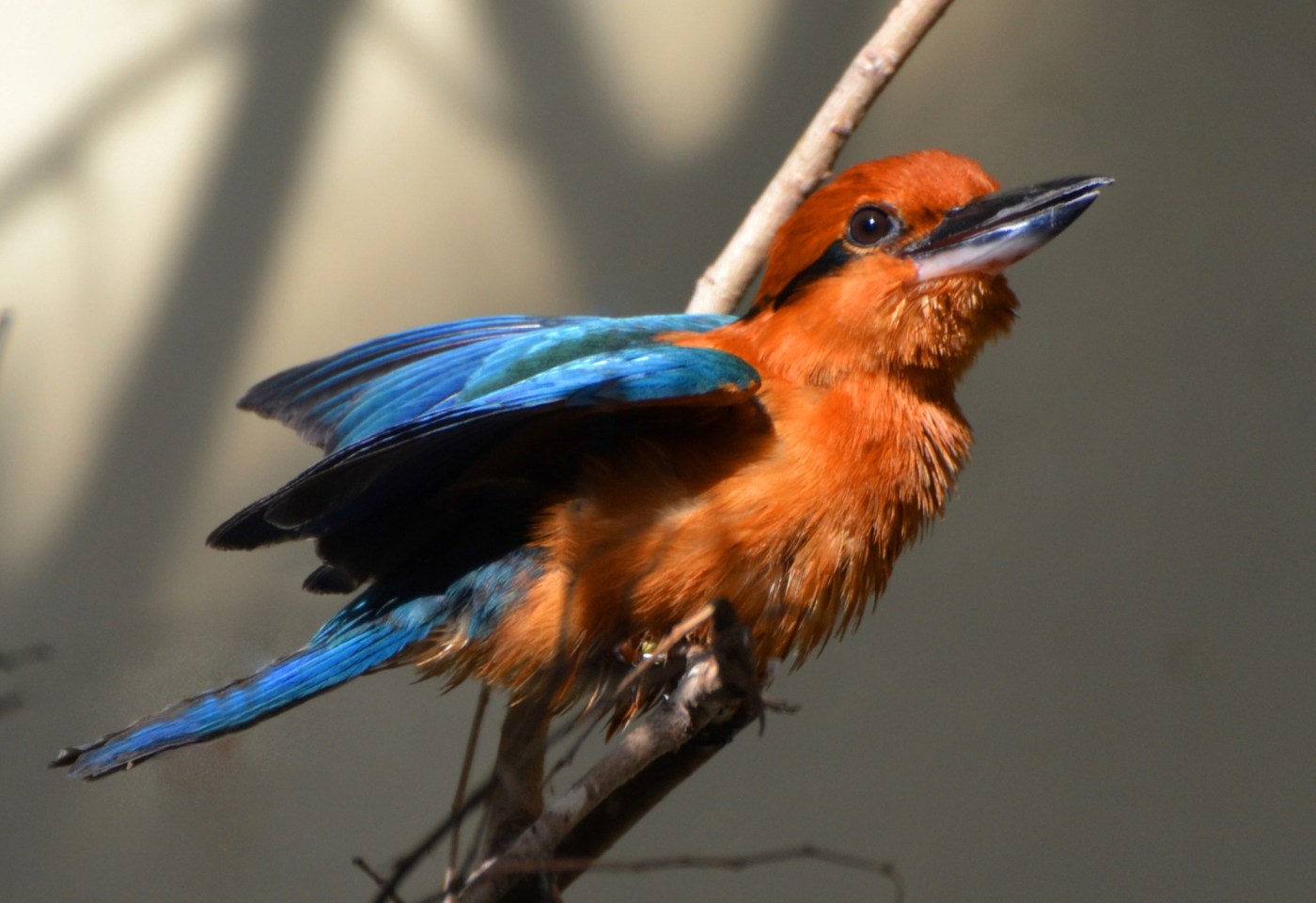It’s been 35 years since this “cerulean blue and cinnamon” colored bird has flown free in the wild.
The Guam kingfisher was deemed extinct in the wild in 1988. Twenty-nine of them were rescued and taken to zoos across the United States in the hope of preserving the species. Now, 127 of these “palm-sized birds” exist today, U.S. Fish and Wildlife Service said.
On Sept. 23, six Guam kingfishers, also called sihek, were released back into the wild for the first time in decades through the Sihek Recovery Program, according to a news release from the Zoological Society of London.
“Today, the Sihek were set free from their aviaries! Their return to the wild is a testament to our people’s spirit and our commitment to preserving our heritage,” Division of Aquatic and Wildlife Program Coordinator Yolonda Topasna said in the release.
Far from the zoos where they were raised, the sihek’s home is now within the tropical forests of Palmyra Atoll, an island in the Pacific Ocean approximately 3,600 miles southeast from Guam.
Nine sihek — four females and five males — were moved from the Sedgwick County Zoo in Wichita, Kansas, to a wildlife refuge at Palmyra Atoll on Aug. 28, officials said. For weeks, conservationists helped the birds acclimate to the remote island.
Three remain with the recovery program on the island because they were not ready to be released, officials said. They will be released individually when they are ready.
For the six released, they were each fitted with a radio tracker so they could be monitored as they live on their own for the first time.
“Sihek are a territorial species, and the team expects the birds will establish home ranges quickly, which will also help with locating and monitoring them — which will provide insights on their habitat use, foraging, and eventual breeding,” officials said. “Supplemental food will also be available to help them transition to the wild.”
Related Articles
Newsom signs new laws cracking down on oil industry in California
US to hand over pest inspections of Mexican avocados to Mexico and California growers aren’t happy
Bay Area residents use board game as disaster preparedness tool
Despite dwindling burial sites, environmental groups continue push to stop new San Jose cemetery
Los Gatos weighs artificial turf vs. real grass for sports park
The species is native to Guam, and officials hope the siheks will eventually return back to the island.
For now, Palmyra Atoll provides a “predator-free and fully protected” environment, according to the society.
“It is one of the healthiest land and ocean ecosystems on the planet, is free of invasive predators like rats, is carefully studied and monitored, and is fully protected as a national wildlife refuge and TNC preserve,” said Alex Wegmann, The Nature Conservancy’s lead scientist for Island Resilience. “Extensive research shows Palmyra’s forests are ideal for the sihek and that introducing it will have minimal effects on native wildlife there.”
The species was placed on the Guam Endangered Species Act in 1982 and on the U.S. Endangered Species List in 1984. The brown tree snake posed a threat to the birds while in Guam’s forests, which led to them being put on the lists, scientists said.
The Brookfield Zoo near Chicago, the Cincinnati Zoo & Botanical Garden, Disney’s Animal Kingdom, and the National Aviary in Pittsburgh also contributed to the rehabilitation effort.
“It has been a multi-year endeavor to get the birds to this point, from breeding the sihek, incubating the eggs, hand rearing the chicks and now releasing them in Palmyra,” Erica Royer, aviculturist from the Smithsonian’s National Zoo and Conservation Biology Institute, said. “As someone who cares for sihek on a daily basis, it is monumental to be able to reintroduce these individuals into the wild after more than three decades.”
©2024 The Charlotte Observer. Visit charlotteobserver.com. Distributed by Tribune Content Agency, LLC.












